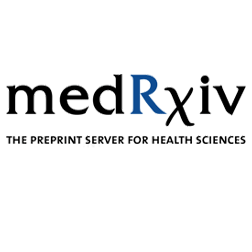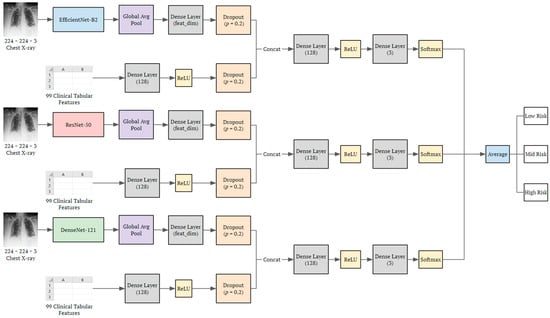Research
HEAL Lab is dedicated to advancing the field of cardiology through innovative applications of deep learning. By developing cutting-edge techniques, we aim to analyze and interpret unstructured data—such as medical imaging, electronic health records, and sensor data—to uncover new insights, improve diagnostics, and enhance patient care. Under the leadership of Dr. Ramsey Wehbe, we strive to bridge the gap between artificial intelligence and cardiovascular medicine, driving impactful research with real-world applications.
Highlighted

Deep Learning for Cardiovascular Imaging
JAMA Cardiology
·
01 Nov 2023
·
doi:10.1001/jamacardio.2023.3142
All
2024

Charting the future of cardiology with large language model artificial intelligence
Nature Reviews Cardiology
·
19 Nov 2024
·
doi:10.1038/s41569-024-01105-y

Accuracy and consistency of online large language model-based artificial intelligence chat platforms in answering patients' questions about heart failure
International Journal of Cardiology
·
01 Aug 2024
·
doi:10.1016/j.ijcard.2024.132115

Performance of risk models to predict mortality risk for patients with heart failure: evaluation in an integrated health system
Clinical Research in Cardiology
·
02 Apr 2024
·
doi:10.1007/s00392-024-02433-2
2023

Echoing Errors: The Problem of Uncurated “Big Data” in Echocardiography
Journal of the American Society of Echocardiography
·
01 Nov 2023
·
doi:10.1016/j.echo.2023.08.012

Deep Learning for Cardiovascular Imaging
JAMA Cardiology
·
01 Nov 2023
·
doi:10.1001/jamacardio.2023.3142

Accuracy and Consistency of Online Chat-based Artificial Intelligence Platforms in Answering Patients’ Questions About Heart Failure
Cold Spring Harbor Laboratory
·
13 Sep 2023
·
doi:10.1101/2023.09.12.23295452

Performance of Risk Models to Predict Mortality Risk for Patients with Heart Failure: Evaluation in an Integrated Health System
Cold Spring Harbor Laboratory
·
25 Jun 2023
·
doi:10.1101/2023.06.23.23291822

DeepCOVID-Fuse: A Multi-Modality Deep Learning Model Fusing Chest X-rays and Clinical Variables to Predict COVID-19 Risk Levels
Bioengineering
·
05 May 2023
·
doi:10.3390/bioengineering10050556

Could an artificial intelligence approach to prior authorization be more human?
Journal of the American Medical Informatics Association
·
21 Feb 2023
·
doi:10.1093/jamia/ocad016

DeepCOVID-Fuse: A Multi-modality Deep Learning Model Fusing Chest X-Radiographs and Clinical Variables to Predict COVID-19 Risk Levels
arXiv
·
01 Jan 2023
·
doi:10.48550/arXiv.2301.08798

A Comparative Study of Pretrained Language Models for Long Clinical Text
arXiv
·
01 Jan 2023
·
doi:10.48550/arXiv.2301.11847
2022

A comparative study of pretrained language models for long clinical text
Journal of the American Medical Informatics Association
·
30 Nov 2022
·
doi:10.1093/jamia/ocac225

Hyponatremia Is a Powerful Predictor of Poor Prognosis in Left Ventricular Assist Device Patients
ASAIO Journal
·
28 Nov 2022
·
doi:10.1097/MAT.0000000000001691

A Simple Score to Identify Increased Risk of Transthyretin Amyloid Cardiomyopathy in Heart Failure With Preserved Ejection Fraction
JAMA Cardiology
·
01 Oct 2022
·
doi:10.1001/jamacardio.2022.1781

Incidental detection of ATTR cardiac amyloidosis
Journal of Nuclear Cardiology
·
01 Jun 2022
·
doi:10.1007/s12350-020-02467-9

Validating Deep Learning to Distinguish Takotsubo Syndrome From Acute Myocardial Infarction—Beware of Shortcuts, Human Supervision Required
JAMA Cardiology
·
01 May 2022
·
doi:10.1001/jamacardio.2022.0193

Advances in Machine Learning Approaches to Heart Failure with Preserved Ejection Fraction
Heart Failure Clinics
·
01 Apr 2022
·
doi:10.1016/j.hfc.2021.12.002

Unleashing the Power of Machine Learning to Predict Myocardial Recovery After Left Ventricular Assist Device: A Call for the Inclusion of Unstructured Data Sources in Heart Failure Registries
Circulation: Heart Failure
·
01 Jan 2022
·
doi:10.1161/CIRCHEARTFAILURE.121.009278

Clinical-Longformer and Clinical-BigBird: Transformers for long clinical sequences
arXiv
·
01 Jan 2022
·
doi:10.48550/arxiv.2201.11838
2021

DeepCOVID-XR: An Artificial Intelligence Algorithm to Detect COVID-19 on Chest Radiographs Trained and Tested on a Large U.S. Clinical Data Set
Radiology
·
01 Apr 2021
·
doi:10.1148/RADIOL.2020203511

Cases from a busy nuclear cardiology laboratory: Potential pitfalls in the interpretation of cardiac scintigraphy for ATTR cardiac amyloidosis
Journal of Nuclear Cardiology
·
01 Apr 2021
·
doi:10.1007/s12350-020-02094-4
2020

Predicting High-Risk Patients and High-Risk Outcomes in Heart Failure
Heart Failure Clinics
·
01 Oct 2020
·
doi:10.1016/j.hfc.2020.05.002

A Left Atrial Thrombus Mimic: Value of Ultrasound Enhancing Agents during Transesophageal Echocardiography
CASE
·
01 Aug 2020
·
doi:10.1016/j.case.2020.04.005
2019

Sex Differences in Outcomes of LVAD Patients Bridged to Transplant
JACC: Heart Failure
·
01 Aug 2019
·
doi:10.1016/j.jchf.2019.04.017
2017

Targeting the Correct Population When Designing Transitional Care Programs for Medicare Patients Hospitalized With Heart Failure
JAMA Cardiology
·
01 Nov 2017
·
doi:10.1001/jamacardio.2017.3089
2016
Underuse of Oral Anticoagulants for Nonvalvular Atrial Fibrillation: Past, Present, and Future
Texas Heart Institute Journal
·
01 Aug 2016
·
doi:10.14503/THIJ-16-5785
2015

Technology and Its Influence on the Doctor-Patient Relationship
International Cardiovascular Forum Journal
·
03 Sep 2015
·
doi:10.17987/icfj.v3i0.99
2009

When to tell and test for genetic carrier status: Perspectives of adolescents and young adults from fragile X families
American Journal of Medical Genetics Part A
·
15 May 2009
·
doi:10.1002/ajmg.a.32840